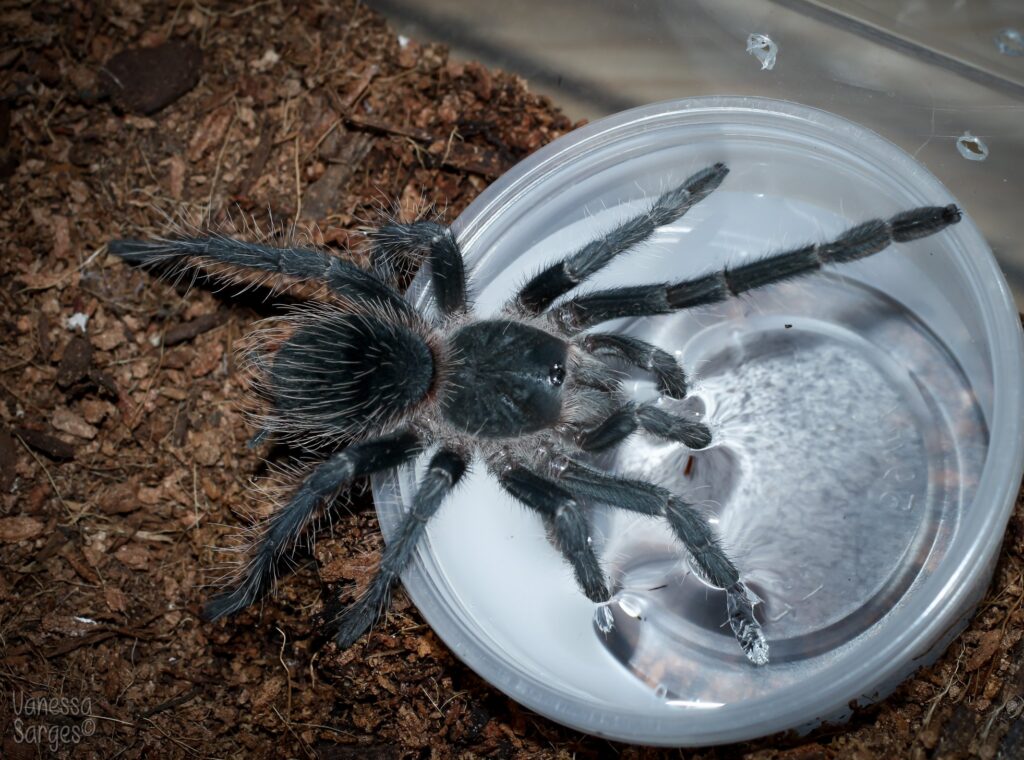Feeding tiny spiderlings can sometimes be a challenge –
Especially if you’re in a smaller town that doesn’t have a pet store that can supply pinhead crickets
There are other options, though, because small spiderlings will scavenge dead food for quite a while.
Just remember to never feed any insects taken from outside, as they might introduce chemicals that could be harmful to your captive-bred animals.
- Small mealworm chunks. Mealworms are a great option, even for people with a small amount of spiderlings. They can be kept alive in the vegetable crisper for months in a container with some oatmeal and airholes. Just take them out, cut their heads of, and cut them into appropriate sized chunks for your spiderlings.
- Larger cricket parts. A leg of a larger cricket is perfect size for a small spiderling to snack on.
- Flightless Fruit Flies. There is some question about how nutritious they are, so I don’t feed them long term.
- Isopods. Some people feed some of the smaller isopods that they use for cleanup crews for other enclosures.

Watering
Seasonal Changes can be hard on all our moisture loving tropical species – especially youngsters. We should all be making adjustments to their care in winter compared to what we do in the far more humid summer months.
1. Check water dishes far more frequently and ensure that everyone has a water dish. Misting alone is ineffective.
2. Replace large, shallow dishes with smaller, deeper ones. Less surface area means that total evaporation takes much longer to occur.
3. Soak the lower layers of the substrate by pouring water down the sides and in the corners. This allows the surface substrate to stay dry while making the lower levels moist. This should be done even with the drier, scrubland species.
- Cover some of the ventilation holes that you have if you’re finding that the enclosure is drying out far too quickly – starting with the ones in the lid first.
- Recognize dehydration behaviour – starting with hovering over the water dish, to a partial death curl, to a full-on death curl.
- Be prepared to provide water manually to a spider who is dehydrated – either by placing them with their mouthparts in a dish, or even administering water manually with a syringe.
- If you’re brand new to keeping the moisture dependent, tropical, species then think about avoiding buying a spiderling going into the driest part of the year and consider putting it off until the spring.
We cannot assume that care over the dry, winter, months is the same as during the humid, summer, months. We have to adjust accordingly.
